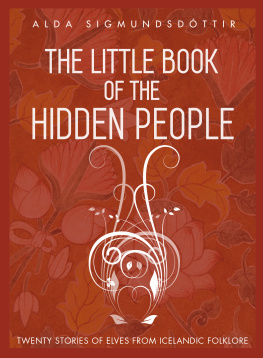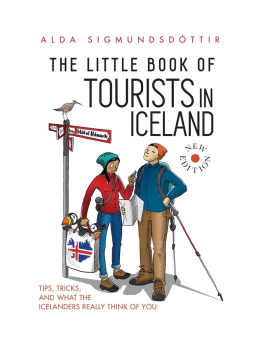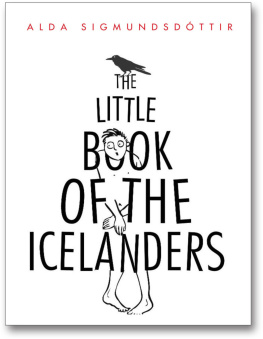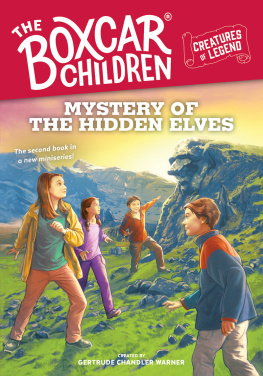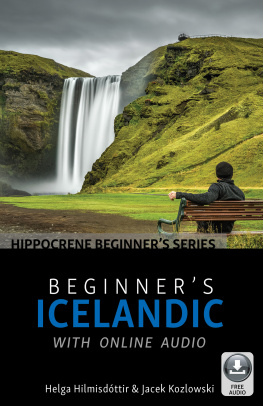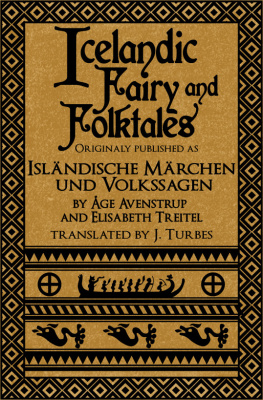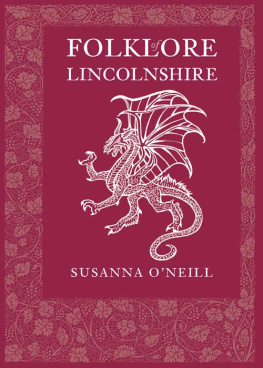About the author
Alda Sigmundsdttir is a writer, journalist and translator. She holds a degree in English and Folkloristics and is the author of five other books about Iceland, some of which have been translated into several languages. She has written extensively about Iceland for the international media, and given numerous talks and lectures about her countrys situation. Catch up with Alda on Facebook , Twitter, Instagram, or via her mailing list.
Also by Alda:
Icelandic Folk Legends - Tales of Apparitions, Outlaws and Things Unseen
The Little Book of Icelandic
The Little Book of the Icelanders
The Little Book of the Icelanders in the Old Days
Unraveled - a Novel About a Meltdown
Living Inside the Meltdown
Introduction
A few years ago, just after the Icelandic banks collapsed, there appeared in US magazine Vanity Fair an article about Iceland. Celebrated journalist and author Michael Lewis had visited to document the countrys financial implosion, and while the main thrust of his piece had to do with the economy, he also made a wry reference to the Icelanders belief in elves. Other international media outlets were quick to pick up the scent, including a reporter with a certain national broadcasting service, who called to ask if I would appear on an upcoming radio show about Iceland and elves. I told him I would be happy to; however, in the course of our conversation it became clear that he and I were not quite on the same page.
HIM: So Icelanders dont believe in elves any more?
ME: No. Hey. Were living in the 21st century.
HIM: But the Vanity Fair article said that they had to pause the construction of a big aluminum smelter until someone came in to check if there were elves living there.
ME: Er, no.
HIM: So Vanity Fair is lying?
ME: Maybe not lying but certainly misrepresenting the truth. What happened was that an archaeological survey was done to make sure that there were no important relics or ruins on the site that might be destroyed during the construction. Also, there was mapping done to see if the site had been mentioned in any old Icelandic folk stories. Stories that might or might not have involved elves. But to say that the construction was paused because elves lived on the site is completely ridiculous.
HIM: Oh.
He sounded so crestfallen that I almost felt sorry for him. Here he thought he had a delectable story, and some annoying person (me) had to go and ruin it. Still, he was a good sport about it, closing the conversation by saying that he still wanted me on the show since they would like to present different points of view.
Two days later I received an email saying that, unfortunately, the plan now was to have only experts on the show, so my contribution would not be required. In the end, those experts were a) a professor of folkloristics at the University of Iceland, b) the owner of an elf school, and c) an older gentleman who shared his experiences with elves as a boy. All of them emphasized that the belief in elves was alive and well in Iceland.
Sigh.
Before I go further, I should probably write a disclaimer: there may be people in Iceland who still believe in elves. In fact, while writing this book, one person told me about a friend of hers who still does. And let us not forget that man who runs the elf school, or the woman who claims to be an elf seer and takes tourists around to show them where the elves live. I am going to give them the benefit of the doubt that they actually believe their own assertions and arent just pretending to so they can rip off poor hapless tourists. However, those folks are the exception, rather than the rule. Personally I do not know anyone who believes in elves. And, in contrast to what is presented by the international media, we Icelanders do not go around talking to elves all day long, or refuse to build anything unless weve talked to them first.
By now you may have got the idea that I find this media elf fixation a tad annoying. And you would be right. It is not just because of the misrepresentation involved. It is because, taken out of its true context, the elf belief becomes a dumb parody of something quite profound. Icelands elf folklore, at its core, reflects the plight of a nation living in abject poverty on the edge of the inhabitable world, and its peoples heroic efforts to survive - physically, emotionally and spiritually. That is what the stories of the elves, or hidden people, are really about.
In the days when elf stories were alive and well in peoples minds, life revolved around two basic needs: food and warmth. Neither of those was readily available. The Icelandic population lived in turf houses that were damp and crawling with bugs. Keeping the warm air in and cold air out was of paramount importance; hence there was a rather gruesome absence of ventilation. The bastofa, a communal room in which people lived, slept, worked, ate, gave birth, died - where they played out their entire lives, basically - was frequently built over the animal shed for warmth. Lice were everywhere, and sometimes preyed upon people so severely that they had open lesions on their skin. Children had about a fifty-fifty chance of making it to adulthood. People were completely at the mercy of the elements - a bad summer could mean starvation, and one volcanic eruption could mean mass death. As if that were not enough, Iceland was a downtrodden and oppressed colony, subject to cruel, arbitrary laws and regulations imposed by its colonial masters and the church. In short: life was a bitch.
Under such soul-crushing conditions, and with no hope of marked improvement during their lifetime, how did people soldier on - year after year, decade after decade, even century after century?
The stories helped. A lot. They were the Icelanders Prozac, providing refuge from the cruel circumstances people faced. They needed to escape from the harsh misery of their daily lives, so during those endless dark winter evenings, while they sat cooped up in the bastofa and worked, they told each other stories. In some of the stories the hero took on formidable adversaries like trolls, ghosts or outlaws, and emerged victorious. In others a world existed parallel to their own, where there was not only prosperity, but also order. This was the world of the hidden people, which I believe was primarily a projection of the fervent dreams and desires of the human population.
The hidden people lived inside hillocks, cliffs or boulders, very close to the abodes of the humans. Their homes were furnished with fine, sumptuous objects. Their clothes were luxurious, their adornments beautiful. Their livestock was better and fatter, their sheep yielded more wool than regular sheep, their crops were more bounteous than those of the humans. They even had supernatural powers. They could make themselves visible or invisible at will, and they could see the future.
The hidden people themselves were also infinitely more attractive than regular mortals. These otherworldly beings were enveloped in an aura of glamour and mystique. They were tall, strong and regal. While often austere and demanding, they could also be gentle and kind. They were the elves in The Lord of the Rings, as opposed to the diminutive leprechauns from Irish mythology. Indeed, J.R. Tolkien is known to have been heavily influenced by Norse mythology and his idea of elves reportedly came from the Icelandic Eddas.
This projection of human desire was especially true when it came to the ljflingar - hidden men who allegedly became the lovers of mortal women. Those stories doubtless reflected the deep yearning of mortal women for love and tenderness in the Iceland of old. It was something that was almost certainly lacking in their daily lives, not merely because toughness was considered a virtue, but because peasants in Iceland were forbidden to marry until they had reached a financial standing that hardly anyone could reach. If they did not marry, the reasoning went, they would not produce new mouths to feed. Yet the instincts have a tendency to override moral or legal decrees, and when they did, unwanted children tended to be the outcome. The parents of an illegitimate child could expect harsh sentences, so the stories of the ljflingar could also have been made up to explain an accidental or unwanted pregnancy.

